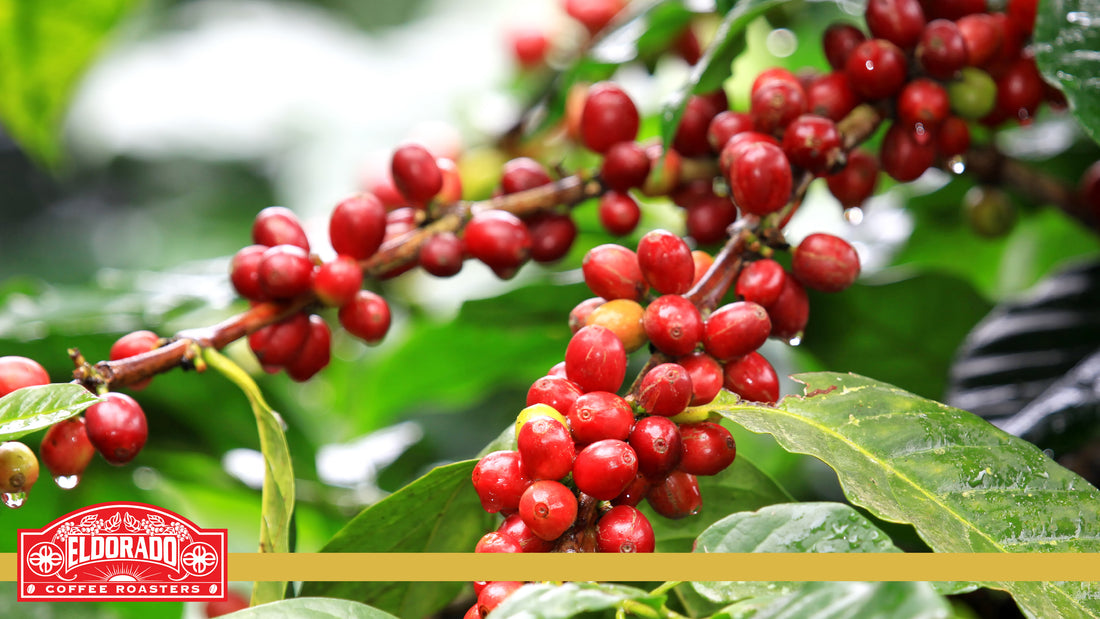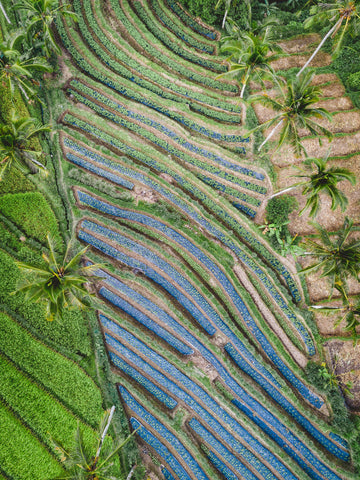
The Interesting (& Awesome) History of Coffee
Share
Coffee isn’t new to our world. Coffee beer, frappuccinos, and coffee ice cream might be modern developments, but good old fashioned coffee dates back to before the 15th century.
Interested in learning more about this worldwide, historical drink you sip on every day? We’re going to give you a brief history of coffee—with some fascinating facts you can share over an afternoon coffee date with friends and colleagues!
Where did coffee start?
Although coffee is now found in plantations and homes worldwide, it all originated on the Ethiopian plateau. There are a lot of legends about how coffee was discovered.
One tale says an Ethiopian goat herder noticed his goats couldn’t sleep and were wildly energetic after eating coffee berries. He told a local monk, who brewed the berries and found it kept him awake and alert all night long during prayer. Then coffee spread like wildfire.
In other stories, the Ethiopian ancestors of the Oromo ethnic group are responsible for the energizing effect of coffee. They found coffee would give it to their hunters to have more energy and help quell their appetites while spending long days and nights searching for food.
Other legends attribute coffee to a Moroccan Sufi mystic who noticed that birds were unusually spry and healthy after eating the coffee berry. Another legend said a man named Omar was hungry, and he found coffee beans nearby. They were too bitter to eat, so he boiled them to soften it, which resulted in the liquid coffee we know today.
We will never know for sure exactly who decided to boil beans and drink the extract. But we do know the first coffee came from Ethiopia—and from there it spread and spread and spread.

How did coffee migrate?
Coffee first spread from Ethiopia through the Arabian Peninsula. In the 1400s, coffee was heavily cultivated in Yemen, which has a perfect climate and soil for harvesting coffee. Into the 1500s, coffee was found in Persia, Egypt, Syria, and Turkey.
Throughout the Arabian Peninsula, coffee was both an at-home delicacy as well as a cultural meeting spot (like it is today). Public coffee houses started to pop up all over, and these became the hubs for conversations, performances, games, music, and socialization. Coffee houses turned into the hub of information and culture, and they were even deemed the “Schools of the Wise” for the stimulating conversations they housed.
By the 17th century, word of coffee and coffee houses had traveled to Europe. Despite some concern in Europe that coffee was the devil’s drink (so much so that the Pope had to give it his approval), coffee houses started popping up as the centers of social activity in Austria, England, France, Germany, and Holland.
By the mid 17th century, there were over 300 coffee houses in London, and coffee became the primary breakfast beverage (replacing beer and wine). Europeans found that drinking coffee made them more energized and awake, especially in comparison to the sleepiness found with beer and wine in the mornings.
Around the same time, coffee was brought over to the New World, specifically New York. Tea was still the favored drink in America—until the King started taxing tea and the revolt of the Boston Tea Party occurred. Once tea was off the table, coffee quickly made its way to the stage as the preferred drink for revolutionary Americans.
Travelers, explorers, and missionaries brought coffee with them on their voyages. Coffee trees were planted worldwide, especially in areas with a ripe climate. The “coffee economy” blossomed. By the end of the 1700s, coffee became one of the most popular and profitable exports around the world.
Still, to this day, coffee is one of the most sought-after commodities.

Interesting Coffee Facts
We’ve given you the “history of coffee timeline,” but how about some fun coffee facts and tidbits you can share with your friends over your next cup?
- Coffee is the second largest traded commodity in the world, after crude oil.
- Coffee beans aren’t beans—they’re fruit. And they grow on a bush. Coffee is actually the pit of the berry, which is why they need to be roasted in order to be consumed.
- Although Americans love their coffee, only two states have the altitude, climate, and soil for coffee production: Hawaii and southern California. Most coffee consumed in America is imported from South America or Europe.
- The Italian word “espresso” doesn’t mean fast—it means expressed or forced out. That’s because espresso uses hot water with high pressure to “push out” concentrated coffee.
- The majority of coffee is made from Arabica or Robusta beans. Arabica coffee is the “OG” from the Arabian Peninsula, but now it’s primarily grown in Latin America. Robusta coffee is grown primarily in Africa and Papua New Guinea.
- Finland has the highest consumption of coffee per capita, followed by Norway, Iceland, Denmark, Netherlands, Sweden, Switzerland, Belgium, Luxembourg, and Canada. Americans drink a lot of coffee—but we don’t even make the top ten!
- In the 16th century, coffee was considered to be the “Devil’s Cup.’ but Pope Clement VIII loved coffee so much that he said something to the effect of: “Satan’s drink is so delicious it would be a pity to let the infidels have exclusive use of it.” According to tales, the Pope baptized the drink and stated it as even more religiously acceptable than alcohol.
The culture of coffee
One of the most interesting facts about coffee is simply how it’s changed our social and economic climate. Coffee houses aren’t unique to Starbucks or hipster cafés. They have been around for nearly 500 years—all over the globe. People have been using coffee as a means to connect, converse, share ideas, and promote creativity since the dawn of coffee consumption itself.
Why is this? What has made coffee the epicenter of culture, in almost every culture crossing international borders?
We like to think it’s probably because of the way coffee makes us feel.
It has a fragrant aroma that fills a room, inviting in guests of all cultures, religions, and backgrounds. Everyone feels the comfort and warmth of that delicious coffee aroma, and this sense of comfort has the power to build bridges between people.
Coffee also makes us more alert, motivated, energetic, and creative. These traits may open up our minds and bodies to new ideas and communications. Coffee invigorates the energy that’s required to push boundaries and experiment with new thoughts.
Coffee has been beloved worldwide for centuries, and that love seems to only be intensifying with each passing year. What was once a boiled bean has evolved to potent espressos, delightful cappuccinos, delicate lattes (complete with latte art), tasty desserts, and so much more. Coffee is in our homes, in our culture, and in our hearts.
How do you enjoy your Eldorado coffee?
